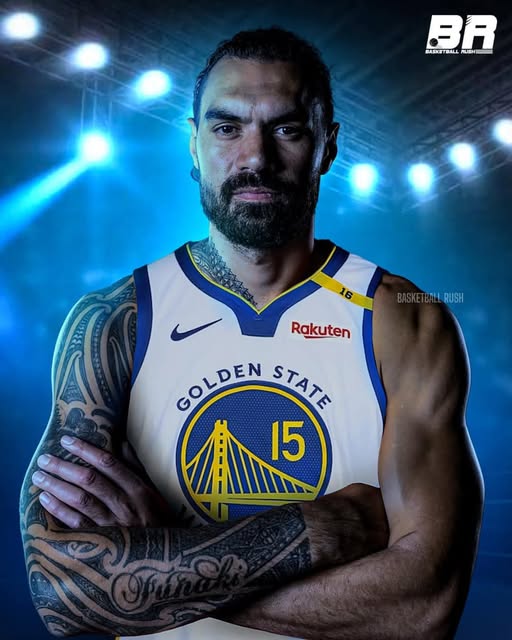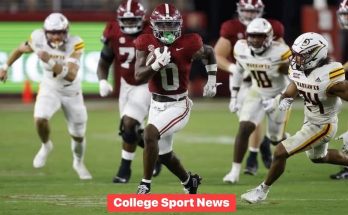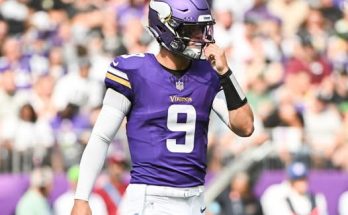The Golden State Warriors have long been a team that values both finesse and grit, balancing their high-octane offense with a disciplined, team-first mentality. In recent years, the franchise has faced challenges maintaining this balance, particularly when it comes to interior defense, rebounding, and physicality in the paint. With their championship core of Stephen Curry, Klay Thompson, and Draymond Green aging and their once-formidable supporting cast dwindling, the front office is now exploring new ways to reinvent the roster for another serious title push. One of the more intriguing storylines emerging from this offseason is the Warriors’ reported interest in signing veteran center Steven Adams.
Steven Adams may not be the flashiest name in NBA circles, but he represents something the Warriors have lacked for years: a legitimate bruiser in the post who doesn’t need the ball to impact the game. Adams, known for his Herculean strength, elite screen-setting, and ability to hold his ground against the league’s most dominant big men, could offer a stabilizing force in Golden State’s frontcourt. His presence on both ends of the floor might just be what the Warriors need to fortify their lineup and re-enter the championship conversation in earnest.
This offseason has already been an active one for Golden State. The departure of veteran guard Chris Paul, rumors swirling around Klay Thompson’s long-term future, and trade buzz involving younger assets like Jonathan Kuminga and Moses Moody have kept the fanbase on edge. But amid all that, the potential addition of Adams signals that the Warriors are still intent on optimizing their roster for another deep playoff run. In particular, Adams addresses glaring issues in rebounding and post defense that have hampered the team since the departure of Andrew Bogut and the decline of Kevon Looney’s physical dominance.
Let’s take a deeper look at what Steven Adams brings to the table and why his fit with the Warriors could be more seamless than some might expect.
To start, Adams is one of the premier offensive rebounders in the league. While his overall numbers might not leap off the page, he consistently ranks among the league leaders in offensive rebound percentage. In a Warriors system that thrives on second-chance threes and capitalizing on chaos, Adams could serve as a linchpin for creating those extra possessions. The Warriors are not known for their rebounding prowess—in fact, they’ve often been one of the league’s worst rebounding teams—and Adams would immediately elevate that department.
Beyond rebounding, Adams excels at the unglamorous aspects of basketball: setting bone-crushing screens, boxing out, and protecting the rim. His screen-setting ability alone could open up more space for Curry and Thompson to operate, which is vital for an offense built around movement and spacing. Adams’ presence would allow Draymond Green to roam more freely on defense and focus on playmaking offensively, something he’s done more efficiently when not burdened by having to play small-ball center.
Defensively, Adams is not a shot-blocking menace like Rudy Gobert or Brook Lopez, but his physicality and ability to hold his ground make him a reliable post defender. He’s not easily bullied, and while he may struggle with perimeter switches due to his mobility limitations, he can still anchor a defense in traditional drop coverage or against larger post threats like Nikola Jokic and Joel Embiid. Against teams with dominant frontcourt players, Adams provides a level of sturdiness that Golden State has sorely lacked.
What also makes this potential signing intriguing is how Adams fits into the Warriors’ culture. Golden State has always valued high-character, selfless players who buy into team basketball. Steven Adams, by all accounts, fits that mold perfectly. His reputation as a consummate teammate, quiet leader, and locker room enforcer makes him an ideal candidate to mesh with Curry and Green. In a locker room that’s undergone its share of turmoil in recent years—from the Draymond-Poole incident to inconsistent young player development—Adams could be a unifying presence.
The question of fit always arises when dealing with players who don’t shoot the three in a system that has made its living beyond the arc. But the Warriors have shown in the past that they can successfully integrate non-shooting bigs. The difference is that those players need to be elite at the things Golden State lacks—screening, rebounding, and defense—and Adams checks all three boxes. He doesn’t need the ball to be effective and won’t clog the offense so long as he continues to do what he’s done throughout his career: open lanes for shooters, dominate the glass, and absorb punishment on defense.
From a contractual and cap standpoint, acquiring Adams would require some maneuvering. He’s currently under contract, but rumors indicate that the team he’s with may be willing to engage in trade talks or buyout scenarios, depending on their future direction. The Warriors, currently facing the reality of a ballooning luxury tax bill, would need to decide if Adams’ potential impact justifies the financial hit. But if ownership is still committed to chasing rings during the twilight of Curry’s prime, this may be a gamble worth taking.
Of course, there are valid concerns. Adams is coming off a knee injury that sidelined him for the majority of last season, raising questions about his durability moving forward. At 31 years old, with a physical style of play that has taken its toll, Adams’ long-term reliability may be in question. The Warriors, already dealing with the fragility of older stars like Curry and Green, can’t afford another injury-prone player clogging up their roster.
Yet, the flip side is that Adams doesn’t need to play 35 minutes a night. On a Warriors team with Kevon Looney, Draymond Green, and perhaps even Dario Šarić or Trayce Jackson-Davis soaking up frontcourt minutes, Adams could be deployed situationally. Whether it’s to match up with larger centers, close out physical games, or give the starters some muscle during the grind of the regular season, his role could be optimized to preserve his health while maximizing his impact.
Another angle to consider is mentorship. The Warriors have several young players on the roster, including Jackson-Davis and Kuminga, who could benefit immensely from Adams’ veteran guidance. Jackson-Davis, a promising but raw big man, could learn the nuances of rebounding, positioning, and setting screens from one of the league’s most respected bigs. Similarly, Adams’ toughness and blue-collar mentality could rub off on a team that at times last year lacked a consistent identity.
Off the court, Adams adds value as well. His professionalism, work ethic, and humility are often cited by former coaches and teammates. In a market like San Francisco, where media scrutiny and expectations run high, having a steady, grounded personality can be invaluable. Adams doesn’t seek the spotlight and is content to do the dirty work, something that can’t be overstated on a team filled with strong personalities and championship aspirations.
The timing of this interest is also worth examining. With the NBA landscape shifting dramatically—Phoenix reloading, Denver still a powerhouse, and Oklahoma City on the rise—the Warriors can’t afford to be passive. While younger teams are climbing the ladder, Golden State’s championship window is closing. If they are to make one last meaningful run with this core, bold decisions must be made. Signing Steven Adams might not be flashy, but it’s the kind of calculated risk that could yield serious dividends.
Ultimately, this potential move would reflect a philosophical shift. For years, the Warriors have leaned into their perimeter-heavy, pace-and-space identity. But as the league has evolved and their own roster has aged, adjustments are necessary. Adams would represent a return to basics—dominance in the paint, second-chance points, and tough-nosed defense. Those aren’t areas traditionally associated with Golden State’s identity, but they’re precisely the attributes that could bridge the gap between early playoff exits and another banner in the rafters.
Moreover, from a strategic perspective, having Adams opens up lineup flexibility. The Warriors could deploy bigger, more physical lineups to battle elite frontcourts in the West while still retaining their small-ball death lineup when necessary. Imagine a closing five of Curry, Thompson, Wiggins, Green, and Adams in certain matchups where physicality outweighs speed. Or perhaps a dual-big lineup with Looney and Adams crashing the glass against teams like Minnesota or Memphis. These possibilities give coach Steve Kerr more tools to adjust on the fly, something that was lacking during the team’s uneven 2024-25 campaign.
Even if the signing doesn’t materialize, the very fact that Golden State is expressing interest in Adams says a lot about where the franchise stands. The Warriors are no longer content relying on pure shooting and finesse—they recognize that to survive and thrive in today’s NBA, they need grit, size, and toughness. Whether it’s Adams or a player with a similar skill set, the message is clear: the Warriors are preparing for war in the Western Conference, and they know that firepower alone isn’t enough.
As the offseason unfolds, more clarity will come. The front office still has major decisions to make, including what to do with Andrew Wiggins, whether to extend Thompson, and how to develop their young core. But a potential signing of Steven Adams would be a low-risk, high-reward move that instantly improves the team’s weaknesses. And for a franchise that has spent the last decade redefining what a championship team looks like, going back to the basics might just be the most innovative decision yet.
In the end, what matters most is whether the Warriors can squeeze one more title out of this historic run. Curry isn’t getting any younger, Green’s effectiveness is declining slowly, and Thompson’s inconsistency has raised doubts about his role. But add in a piece like Adams—reliable, rugged, and battle-tested—and suddenly, the Warriors look a lot less like a fading dynasty and more like a team reloading for another march toward greatness. Whether this move becomes reality remains to be seen, but its mere possibility has already reignited hope that the Golden State Warriors aren’t done just yet.



